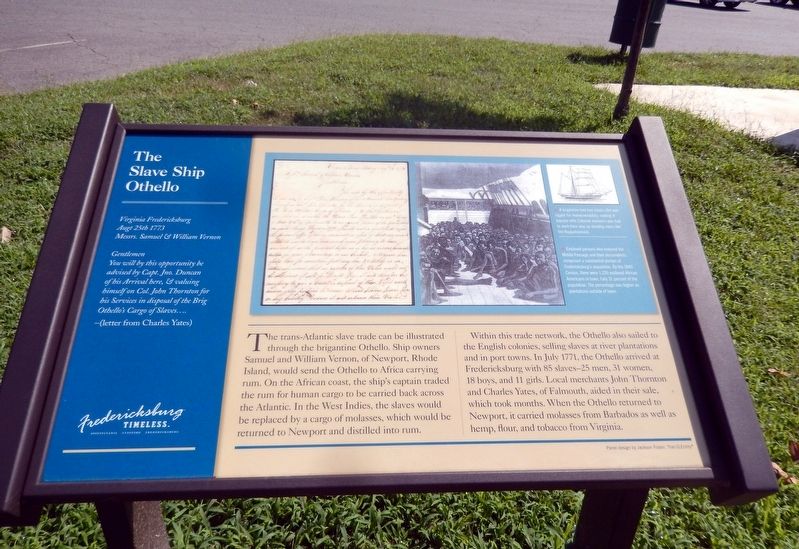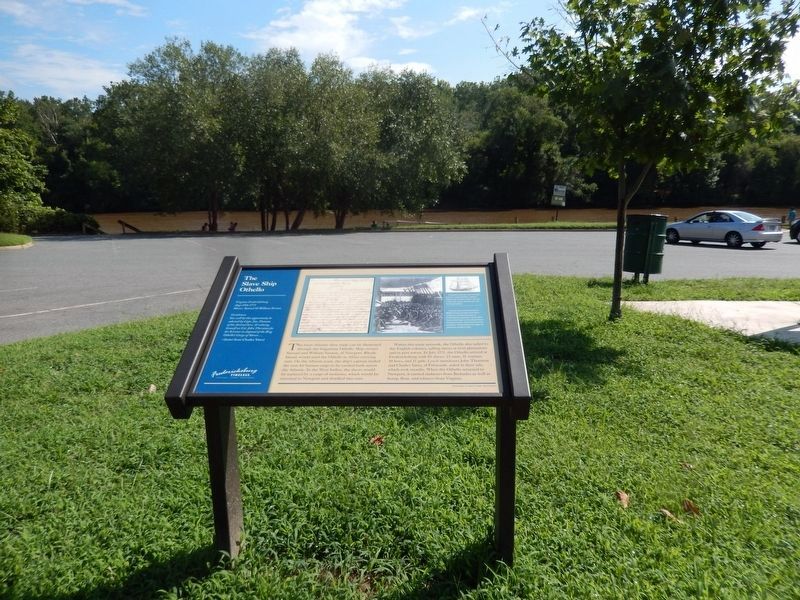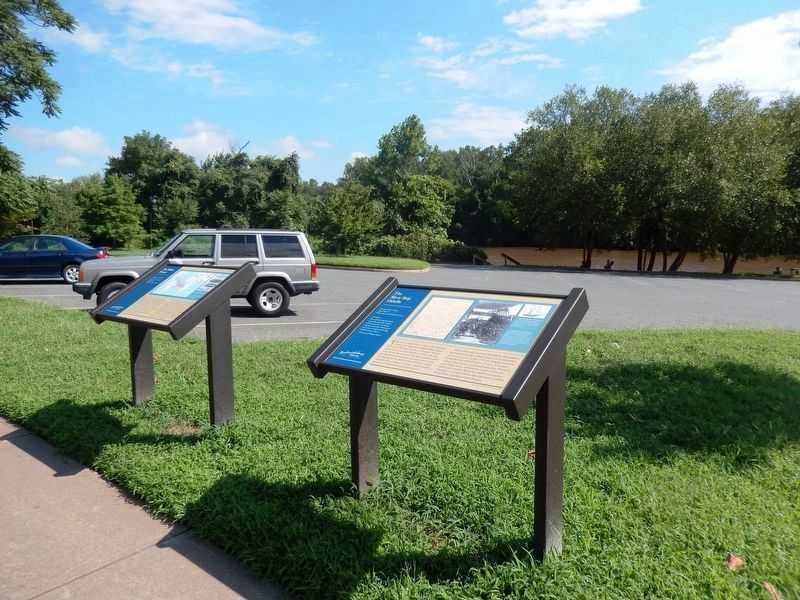Fredericksburg, Virginia — The American South (Mid-Atlantic)
The Slave Ship Othello
Fredericksburg: Timeless.
Virginia Fredericksburg
Augt 25th 1773
Messrs. Samuel &William Vernon
Gentlemen
You will by this opportunity be advised by Capt. Jno. Duncan of his Arrival here, & valuing himself on Col. John Thornton for his Services in disposal of the Brig. Othello’s Cargo of Slaves…
—(letter from Charles Yates)
The trans-Atlantic slave trade can be illustrated through the brigantine Othello. Ship owners Samuel and William Vernon, of Newport, Rhode Island, would send the Othello to Africa carrying rum. On the African coast, the ship’s captain traded the rum for human cargo to be carried back across the Atlantic. In the West Indies, the slaves would be replaced by a cargo of molasses, which would be returned to Newport and distilled into rum.
Within this trade network, the Othello also sailed to the English colonies, selling slaves at river plantations and in port towns. In July 1771, the Othello arrived at Fredericksburg with 85 slaves—25 men, 31 women, 18 boys and 11 girls. Local merchants John Thornton and Charles Yates, of Falmouth, aided in their sale, which took months. When the Othello returned to Newport, it carried molasses from Barbados as well as hemp, flour, and tobacco from Virginia.
(captions)
A brigantine had two masks and was rigged for maneuverability, making it popular with Colonial mariners who had to work their way up winding rivers like the Rappahannock.
Enslaved persons who endured the Middle Passage and their descendents comprised a substantial portion of Fredericksburg’s population. By the 1840 Census, there were 1,226 enslaved African Americans in town, fully 31 percent of the population. The percentage was higher on plantations outside of town.
Erected by Fredericksburg Economic Development and Tourism Office.
Topics and series. This historical marker is listed in these topic lists: African Americans • Agriculture • Colonial Era • Industry & Commerce • Waterways & Vessels. In addition, it is included in the Virginia, Fredericksburg: Timeless. series list. A significant historical month for this entry is July 1771.
Location. 38° 17.811′ N, 77° 27.236′ W. Marker is in Fredericksburg, Virginia. Marker is on Sophia Street, 0.1 miles south of Frederick Street, on the left when traveling south. The marker is located in City Dock Park. Touch for map. Marker is at or near this postal address: 101 Sophia Street, Fredericksburg VA 22401, United States of America. Touch for directions.
Other nearby markers. At least 8 other markers are within walking distance of this marker. The Middle Passage (here, next to this marker); No Outlet (here, next to this marker); Fredericksburg City Dock (within shouting distance of this marker); a different marker also named Fredericksburg City Dock (within shouting distance of this marker); Irish Brigade (within shouting distance of this marker); a different marker also named Fredericksburg City Dock (within shouting distance of this marker); Washington's Boyhood Home (within shouting distance of this marker); Rocky Lane (within shouting distance of this marker). Touch for a list and map of all markers in Fredericksburg.
Additional keywords. slavery, human trafficking
Credits. This page was last revised on February 2, 2023. It was originally submitted on September 1, 2016, by Don Morfe of Baltimore, Maryland. This page has been viewed 795 times since then and 54 times this year. Photos: 1, 2, 3. submitted on September 1, 2016, by Don Morfe of Baltimore, Maryland. • Bernard Fisher was the editor who published this page.


